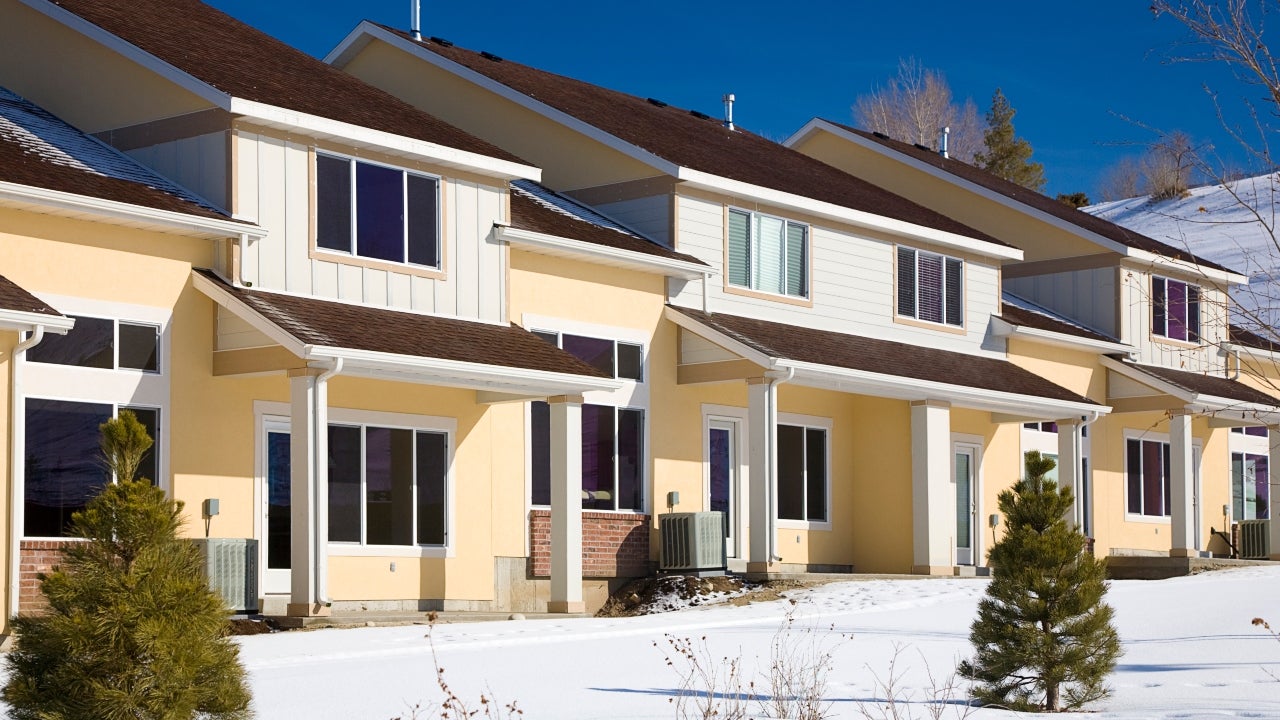Low- and no-down payment minority mortgages still present risks

One of the nation’s largest banks made a splash recently when it announced a generous loan program aimed at narrowing the nation’s racial wealth gap — but it isn’t the only lender looking to address this ongoing challenge.
Similar to Bank of America’s new Community Affordable Loan Solution, TD Bank this year also launched an initiative aimed at increasing homeownership among Black and Hispanic Americans. The Mortgage Bankers Association, too, is focusing on the racial gap in homeownership with lending initiatives in Memphis, Tennessee, and Columbus, Ohio.
Those in real estate greeted Bank of America’s effort with a combination of enthusiasm and caution.
“I love the program,” says Storm Leroy, a real estate investor and advocate for Black homeownership. “Of course, there are a couple things I have a few questions about.”
One obvious concern: the risks faced by borrowers taking on a hefty debt despite limited financial experience. With home prices peaking in recent months, there also are worries that new owners could find themselves underwater on their loans.
How TD Bank’s program works
TD Bank is the ninth-largest financial institution in the U.S. Its TD Home Access Mortgage, a 30-year loan, includes a $5,000 lender credit that doesn’t have to be repaid and flexibility around debt-to-income (DTI) ratios and other standard underwriting requirements. Traditionally, borrowers accept lender credits as a way to help reduce what they’d need to pay at closing, with the trade-off being a higher interest rate.
Like Bank of America’s new program, TD’s Home Access loans are fixed-rate mortgages that don’t require borrowers to pay mortgage insurance. However, the loans carry slightly higher interest rates than those available to borrowers with bigger down payments and stellar credit scores. Home Access also calls for a minimum 3 percent down payment; Bank of America’s initiative has no down payment or closing costs requirement.
TD Bank considered the possibility that its terms would set up some borrowers for failure, says Michael Innis-Thompson, the bank’s head of Community Lending and Development. During the housing bubble of 2005 to 2007, lenders notoriously extended mortgages to just about anyone.
In contrast to those subprime loans of yore, TD’s new program includes safeguards.
“We were satisfied that we were rolling out a product that would not necessarily put borrowers at risk,” says Innis-Thompson. “Unlike the prior market, we are ensuring that our borrowers are qualified.”
The Bank of America program is limited to first-time buyers in African-American or Black and Hispanic-Latino neighborhoods in Charlotte, Dallas, Detroit, Los Angeles and Miami. TD Bank doesn’t require borrowers to be first-time homeowners, but similarly bases eligibility on the location of the home and the borrower’s income, rather than race. In practice, a White buyer within income limits purchasing a home in a mostly Black or Hispanic Census tract could qualify for a Bank of America Community Affordable or TD Home Access loan.
That raises concerns about gentrification — the trend of White homeowners moving into formerly minority neighborhoods.
“We are monitoring our program on a monthly basis to make sure it’s really achieving the goals we set out,” says Innis-Thompson.
TD Bank wouldn’t disclose how many loans borrowers have landed through the program or precisely where it’s available, but the bank is active in markets such as Miami and Philadelphia, where much of the population is Black and Hispanic.
Homeownership inequality persists
The lending initiatives by TD Bank and Bank of America aim to address an ongoing challenge for the U.S. housing market: Black and Hispanic Americans’ struggle to attain homeownership. While nearly three-quarters of White Americans owned their homes as of the second quarter of 2022, less than half of Black and Hispanic Americans were homeowners, according to the U.S. Census Bureau.
“Households of color have been really historically shut out,” says Nicole Wright, a vice president at US Bank.
There are many drivers of the racial homeownership gap, including lower incomes and less household wealth among Black and Hispanic Americans, along with the real estate industry’s history of discriminatory lending practices. Mortgage lenders long ago abandoned such overtly biased practices as redlining, but the economic wounds have been slow to heal. A growing body of research suggests that homes owned by African Americans today are undervalued by appraisers, and in one recent survey, close to half of Black and Hispanic homebuyers reported missing out on homes in certain neighborhoods due to discrimination.
The Fair Housing Act has been in place for more than half a century, but has done little to close the racial gap in homeownership. Innis-Thompson says TD Bank’s program was inspired in part by the civil justice protests of 2020.
Tips before you apply
For homebuyers who qualify, programs from TD Bank and Bank of America might offer a compelling deal. While a number of loan programs accommodate buyers with low to no down payments, all come with higher fees such as mortgage insurance. Before you jump to apply, however, consider the following tips:
- Make sure you’re ready. Before becoming a homeowner, take a hard look at your finances. Make sure you can afford your mortgage in addition to any student loans, car payments or other debt. Also, consider the stability of your income — with inflation putting pressure on budgets and recession talk growing louder, it’s crucial to really evaluate whether now is the best time for you to buy a home.
- Build up your savings. Homeownership is generally a sound financial move, but it’s expensive. In addition to property taxes and homeowners insurance, you’re also on the hook for maintenance, repairs, pest control, landscaping and other ongoing costs. If you haven’t already, funnel those savings into a high-yield account — at the moment, rates are favorable for savers.
- Look into grant programs. Most states and some cities and nonprofits offer down payment assistance for first-time homebuyers. Even if you’re not buying in a neighborhood covered by the new initiatives, homebuyer assistance programs are available nationwide. Look into grants (essentially free money), as well.
- Consider house-hacking. A new name for an old strategy, house-hacking means living in a duplex or triplex. You occupy one unit and then rent the other out, and your tenants help pay the mortgage. Of course, this isn’t a plan to dive into without due diligence, and multifamily homes are generally more expensive than one-unit properties, so this won’t be an option for every borrower.






